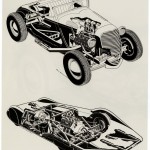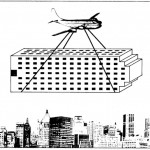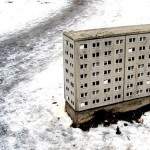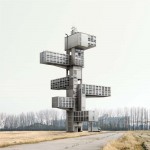The Yaodong (窑洞) is a type of architecture developed in the Loess Plateau in the north of China. The name literally means “cave building” and describes a series of buildings carved into the earth.
The region has a wide temperature range during the year, with cold and dry winters and hot summers; the earth surrounding the interior spaces in the Yaodong helps keep them isolated in both conditions. The first Yaodong date back to the second millennium BC and nowadays, it is estimated that more than 40 millions people inhabit cave houses in China.
There are mainly two main types of cave dwellings: those dug into cliffs and those carved in the ground around a central courtyard. Another kind of Yaodong is not excavated but works as a standalone building. The cliffside Yaodong’s employ the rock wall as their primary structure, and the interior is reinforced with a wooden frame. The rooms are vaulted, and the walls are made with clay and clad with stones on the outside. The openings are arched and finished with decorated wooden windows panes.
The farmers would cultivate the plains and then live underneath terraced plateaus.

In the courtyard Yaodong built on high and dry locations, each room is individually excavated and opens on the central courtyard – the primary source of natural light, providing also the main distribution. In most of the courtyard Yaodong, the guest rooms face the South, while the kitchen and the family room are located on the Eastside.

The courtyard, which is sunk in the ground up to 10 meters, also includes a draining well. Each cave is covered with at least two meters of earth to insulate its interior. A sunken slope with a stair provides access to the courtyard.




Further reading:
Ronald G. Knapp, China’s Old Dwellings, University of Hawai’i. Press, Honolulu, 2000





Leave a Reply